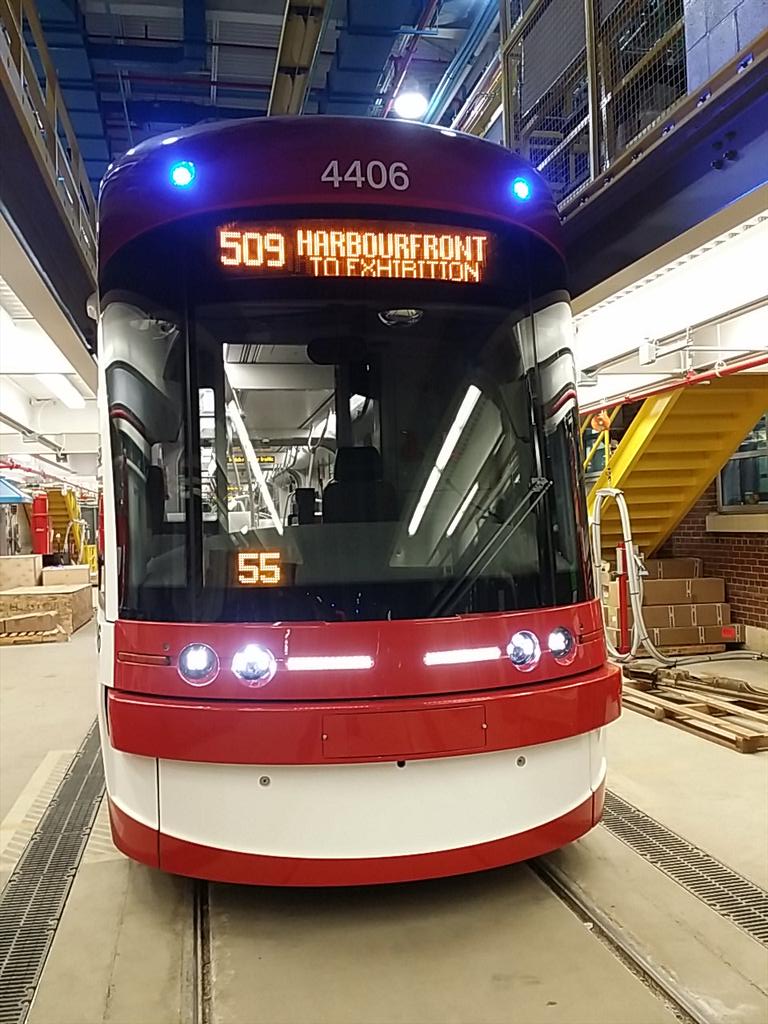After 20+ years of seeing that not work particularly well on Queens Quay and Spadina, I'd say let's go for nearside stops, and not have the streetcar stop twice. The red-light delay on nearside stops seems to be far more functional.
That's Toronto's fault for not managing them properly. A well designed signal priority system can give greens >95% of the time.
Installing near-side stops is basically a permanent exclusion of TSP ever working efficiently. I did a review of signal operation on King Street near the end of last year, and found that there was very little we could do to reduce wait times at traffic lights because the signal simply can't know when the vehicle is going to enter the intersection in order to provide a green at that time. At the same time, I looked at a couple signals on St. Clair, and they seemed to be working fairly effectively.
It doesn't make sense to build an anti-TSP design based on your impression the current staff. New staff is hired much more frequently than we rebuild our infrastructure. Even now, there are city employees (such as myself!) trying to increase the effectiveness of our current 1980's-era TSP system, and others looking to find a modern replacement for it.
There are two main reasons that the TTC's TSP system is so ineffective and inefficient.
Firstly, each signal separately detects vehicles, so it only gets one city block of advance notice that a streetcar is coming. That works out to around 10-15 seconds at cruising speed. Given that it takes up to 20 seconds to change a red light to green (~12s pedestrian countdown, 4s amber, 2s all-way red), most signals' TSP system is incapable of truncating a red quickly enough for an approaching streetcar to pass through on green.
Secondly, traffic signal operations in Toronto prioritize pedestrians to a very high degree. In order to avoid unnecessary delay, the city prefers to use a TSP algorithm that provides green extensions with a "walk" display, rather than a "don't walk" display. That's something that sounds great in theory, but is disastrous in practice.
To provide a green extension with a "walk" display, decisions about providing green extensions must be made before the start of the pedestrian countdown - 8 to 15 seconds before the start of the actual extension. Given that we only have 10 or so seconds advance notice that a streetcar is coming, you can start to see how our TSP is so horrendously ineffective.
Part of the issue that has existed over the past 20+ years is that we had very little flexibility to adapt the TSP parameters for each intersection based on its individual characteristics. We simply had 4 combinations of walk and don't walk extensions with either 15 or 30 seconds of each. With our new central signal control system that was installed over the past few years, that is no longer a constraint and we can specify anything we like, though at the moment we are still operating with the mostly-arbitrary values carried over from the old system.
In my spare time, I came up with a calculation to determine the optimal parameters at each signal based on the advance notice it gets of an approaching streetcar and the duration of its pedestrian countdown. I have yet to try and get it implemented, but based on a bit of talking to co-workers I think I will be able to do so.







